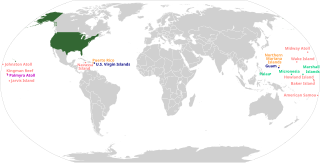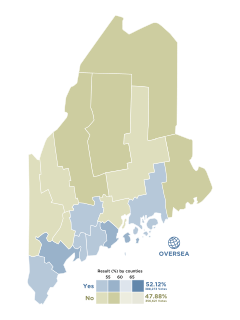In United States government, the line-item veto, or partial veto, is the power of an executive authority to nullify or cancel specific provisions of a bill, usually a budget appropriations bill, without vetoing the entire legislative package. The line-item vetoes are usually subject to the possibility of legislative override as are traditional vetoes.

A veto is a legal power to unilaterally stop an official action. In the most typical case, a president or monarch vetoes a bill to stop it from becoming law. In many countries, veto powers are established in the country's constitution. Veto powers are also found at other levels of government, such as in state, provincial or local government, and in international bodies.

The California State Legislature is a bicameral state legislature consisting of a lower house, the California State Assembly, with 80 members; and an upper house, the California State Senate, with 40 members. Both houses of the Legislature convene at the California State Capitol in Sacramento. The California state legislature is one of just ten full-time state legislatures in the United States. The houses are distinguished by the colors of the carpet and trim of each house. The Senate is distinguished by red and the Assembly by the color green.

The phrase "51st state" in American political discourse refers to areas or locales that are—seriously or facetiously—considered candidates for U.S. statehood, joining the 50 states that have constituted the United States since 1959. The phrase has been applied to external territories as well as parts of existing states which would be admitted as separate states in their own right.
A supermajority, supra-majority, qualified majority, or special majority is a requirement for a proposal to gain a specified level of support which is greater than the threshold of more than one-half used for a simple majority. Supermajority rules in a democracy can help to prevent a majority from eroding fundamental rights of a minority, but they can also hamper efforts to respond to problems and encourage corrupt compromises in the times action is taken. Changes to constitutions, especially those with entrenched clauses, commonly require supermajority support in a legislature. Parliamentary procedure requires that any action of a deliberative assembly that may alter the rights of a minority have a supermajority requirement, such as a two-thirds vote.
In the politics of the United States, the process of initiatives and referendums allow citizens of many U.S. states to place new legislation, or to place legislation that has recently been passed by a legislature on a ballot for a popular vote. Initiatives and referendums, along with recall elections and popular primary elections, are signature reforms of the Progressive Era; they are written into several state constitutions, particularly in the West. It is a form of direct democracy.

The American Samoan Legislature or Fono has two chambers, the House of Representatives and the Senate, which has a directly elected head of government, the Governor of American Samoa.
Same-sex marriage in Washington has been legally recognized since December 6, 2012. On February 13, 2012, Governor Christine Gregoire signed legislation that established full marriage rights for same-sex couples in the state of Washington. Opponents mounted a challenge that required voters to approve the statute at a referendum, which they did on November 6. The law took effect on December 6, and the first marriages were celebrated on December 9. Within a couple of days, more than 600 marriage licenses were issued to same-sex couples in King County alone.

The Legislative Assembly, also known as the Parliament of Samoa, is the national legislature of Samoa, seated at Apia, where the country's central administration is situated. Samoan Parliament is composed of two parts: the O le Ao o le Malo and the Legislative Assembly.

The American Samoa Fono is the territorial legislature of American Samoa. Like most states and territorial legislatures of the United States, it is a bicameral legislature with a House of Representatives and a Senate. The legislature is located in Fagatogo along Pago Pago harbor.

General elections were held in American Samoa on 4 November 2008, coinciding with the 2008 United States general elections.

A constitutional referendum was held in American Samoa on November 2, 2010, on the same day of the United States House of Representatives election and American Samoan general election.
Samoa, officially the Independent State of Samoa, has a population of approximately 188,000 people. Samoa gained independence from New Zealand in 1962 and has a Westminster model of Parliamentary democracy which incorporates aspects of traditional practices. The Human Rights Protection Party (HRPP) is currently in government and has been so for over 20 years. In 2016, Samoa ratified the Convention on the Rights of Persons with Disabilities CRPD and the three optional protocols to the CRC

General elections were held in American Samoa on 6 November 2012, alongside a referendum on giving the Fono veto power over the governor. Voters chose a new governor and lieutenant governor, twenty members for the American Samoa House of Representatives, and the Delegate to United States House of Representatives. Incumbent governor Togiola Tulafono was term-limited and could not seek re-election.

A constitutional referendum was held in American Samoa on 6 November 1973. Voters were asked to whether they approved of a new constitution, The new constitution provided for the direct election of the Governor and Lieutenant Governor, a doubling of the salaries for members of the Fono, issuing government bonds to raise money, and decentralising some powers to counties and villages.

A constitutional referendum was held in American Samoa on 2 November 1976. The amendment proposed introducing a new section 25 to Chapter II, article 25 of the constitution, which would have read:
Section 25. Compensation of the legislature. The compensation of the members of the Legislature is provided by law.

A two-part referendum was held in the United States Virgin Islands on 4 November 2014. Voters were asked whether they approve of extending the term of office of Senators from two to four years, and whether the cultivation and use of cannabis for medical and research purposes should be allowed.

Maine Question 5, formally An Act to Establish Ranked-Choice Voting, is a citizen-initiated referendum question that qualified for the Maine November 8, 2016 statewide ballot. It was approved by a vote of 52% in favor, 48% opposed. It sought to change how most Maine elections will be conducted from a plurality voting system to a ranked-choice voting system. It appeared on the ballot along with elections for President of the United States, Maine's two U.S. House seats, the legislature, five other ballot questions, and various local elections. The referendum was successful, making Maine the first state to use ranked choice voting for its federal elections.

A constitutional referendum was held in American Samoa on 6 November 2018, alongside general elections. The proposed constitutional amendment would allow the Fono to override the veto of the Governor, a proposal which had previously been rejected by voters in referendums in 2008, 2010, 2012 and 2014. Voters again rejected the measure, with 70% voting against.

In the United States, the president can use the veto power to prevent a bill passed by the Congress from becoming law. Congress can override the veto by a two-thirds vote of both chambers.







